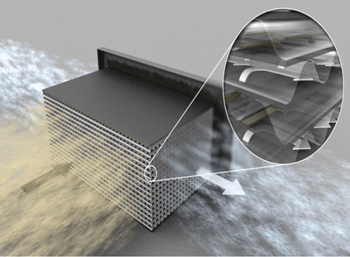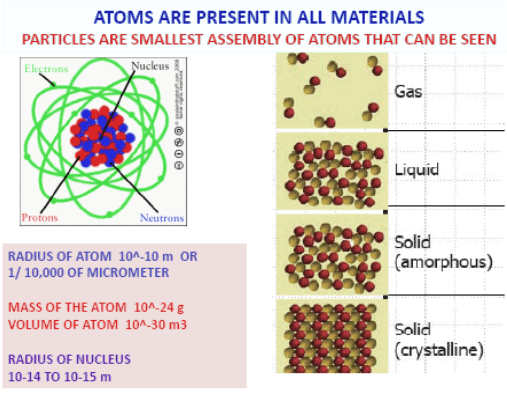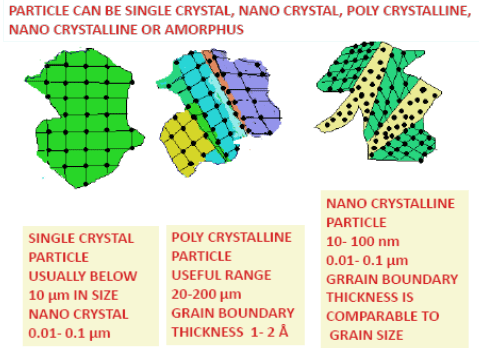PM-12 India: New applications for metal powders
The plenary sessions at PM-12 not only dealt with ferrous powders, but also focused on a wide range of Powder Metallurgy applications for other powders.
Alternative applications
A presentation by Srini V Srinivasan of Höganäs India Pvt. Ltd, illustrated the alternative applications of ferrous powders. Srinivasan stated that huge potential exists in the Metal Injection Moulding (MIM) market for powders with a performance between ferrous PM and MIM. This offers opportunities for materials other than those used today by the MIM industry. He added that there is a need for research in the use of coarser powders as diluting agents for traditional fine MIM powders, or for MIM products which require lower ductility.
The other alternative, it was suggested, is to solely use coarser powders and maintain sinterability by sintering in the ferrite phase. Srinivasan added that applications need to be developed using low alloyed steels alloyed with Cr, Mo, P and Cu as well as using ferritic stainless materials (400-series).
Further cost efficient solutions can be found for larger components using 3D Additive Manufacturing shaping techniques.

One example is the Metal Powder Filter Stack – a filter solution
without closed channels designed by Höganäs and Volvo within
the E4 Mistra project. The filter gives better ash storage
capacity than traditional Cordierite filters
Cost-efficiency can also be achieved through less expensive magnetic materials, such as Somaloy, that lead to a simplified assembly (for example in the Twinbird BLDC linear motor the use of Somaloy has reduced the number of parts from 1300 to 5).
The characteristics and applicability of powders made from Nickel/Cobalt/Iron base aloys for various powder coating processes were also discussed.
Srinivasan stated that developments in porous ferrous sheets for diesel particulate filters and solid oxide fuel cells are envisaged. The importance of PM in water treatment technologies was emphasised by the Höganäs initiated product Cleanit®-LC.
Binder treated powders
Dr Brian James of Hoeganaes Corporation, USA, stressed the importance of binder treated powders which help in reducing dusting, segregation and loss of alloying elements as well as causing beneficial effects in the health and safety of employees. Warm die compaction, warm powder compaction and lower cost alternates to diffusion alloyed processes are technologies that use binder treated powders.
Special binders are developed that improve apparent density of the binder treated powders, reducing fill depth in dies and allowing taller parts to be manufactured.
Use of nitrogen in sintering
Dr Graham Schaffer of University of Queensland, Australia, pointed out that the thickness of oxide layer on atomised aluminium powder can vary from 50- 150 Å. Magnesium content as low as 0.15% can rupture the oxide film and expose the metal surface for sintering. Nitrogen gas is beneficial to sintering as long as the gas flow around each specimen is precisely controlled, he stated.
Electrical engineering and electronic industries
Dr T L Prakash of C-MET, India, described the developments in powders and technologies related to electrical engineering and electronic industries. The miniaturisation required by these industries is related to the fine size and high purity of the powders, he stated.
Processes developed for the production of refractory metals such as Ta, Nb and Hf were discussed. Prakash looked at the development of tantalum capacitors from tantalum, manganese oxide and tantalum oxide. The bulk production of nano metallic and ceramic powders of high purity by the plasma transfer arc method, at a rate of 250g per hour, was also described.
A Paradigm Shift in PM through science
It was suggested that a paradigm shift in powder metallurgy can be made if the technology becomes more science based. According to Dr Rama Mohan R T, this will help in developing unique applications.
At the most fundamental level is the particle which, until now, has not received the due attention from powder metallurgists, Dr Rama Mohan suggested. Powder particles are the smallest assembly of atoms and can exhibit crystalline, nano crystalline or amorphous structures. These can be either bonded by a combination of primary metallic, transition metallic, ionic or covalent or by secondary Van der Waals bonding. The origin and control of surface energy is then related to these parameters.
What is known is that the processing techniques employed confer unique particle sizes and shapes on the powder particles that affect surface energy, stated Dr Rama Mohan. Finer and irregular shaped particles exhibit higher relative surface areas and hence higher surface energies. This in practice means higher tendency for forming hard agglomerates, higher interaction with the binder/ plasticisers as well as higher sintering rates.
The surface energy plays a prominent role in the powder particle-solution interface. Understanding this fact has resulted in sol gel processing of ultra fine ceramic powders which is then extended to include solidification of gels and gel coatings. Ever increasing use is made of polymers in the form of surfactants, plasticisers, lubricants etc. Thus today ceramics are routinely processed by slip casting, gel casting, compaction, extrusion and injection moulding.
It is possible to shape form metal powders by polymer binder assisted processing provided the particles are fine and spherical. The knowledge gained by ceramic processing into shapes is now applied to metals in warm compaction, powder rolling (CSIRO, Australia), powder extrusion (Sapa AB, Sweden), powder injection moulding and gel and slip casting of metals.
Thus avenues are open for making PM as a competing technology for continuous or semi continuous processing of large shapes that are otherwise made by conventional metal working processes. Typical examples are metallic/ ceramic/ composite honeycombs for automotive/ catalysis/ fuel cells/ thermopiles, light weight and hollow structures, complex shaped components, diesel caps (Corning Glass Works, USA) etc. Either way the particulate materials technology is entering into second and more sophisticated phase, concluded Dr Rama Mohan.
Nano powders
Production of nano powders and products developed from nano powders were discussed by Dr G Sundararajan of ARCI, Hyderabad, India. Typically the feed stocks from nano powders are used in thermal sprayed nano structured coatings and sintered pre-forms are hot extruded to bulk components. Nano powders are also used as additives to sols and are formed into sol-gel nano composite coatings. Nano dispersoid coatings are produced by using nano particle additives in the solution precursor. Several ceramic nano powders are developed for dust resistant glasses, bio composite coatings etc.
The other plenary talks at PM-12 related to component as well as equipment development and will be discussed in subsequent articles.
News | Articles | Market reviews | Search directory | Subscribe to e-newsletter







